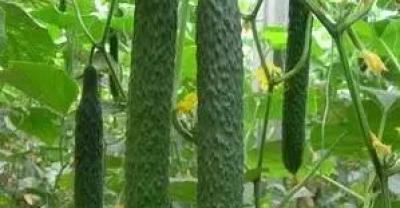Cabbage rosette stage: when is cabbage rosette stage and what is it like? How to manage the rosette stage of Chinese cabbage
The rosette stage of Chinese cabbage mainly refers to the stage from the true leaf to the heart. The rosette stage is the most important stage in all the growth stages of Chinese cabbage. The growth of this stage is closely related to its yield, which is usually about 3-4 weeks. Therefore, the management work in this period is also very important, so the editor today has brought you the management method of the rosette stage of cabbage. Let's take a look at it.

1. Ploughing and weeding
Chinese cabbage needs to be weeded about 3 times during its whole growth period, one of which is in the rosette stage. After the cabbage enters the rosette stage, weeding should be done in time before the ridges are closed. Weeding time should be selected in sunny days, when the leaves soften. Prevent the leaves of Chinese cabbage from being too hard and hurt them in the process of weeding. When ploughing, we should take the deep trench and shallow back as the principle, and the depth of the ridge should not exceed 5 cm. The depth of ridges and furrows should be kept at about 10 cm to create a good environment for the growth of Chinese cabbage in the rosette stage, and intertillage should be stopped after the ridge is closed.
2. Fertilizer and water management
After entering the rosette stage, the growth rate of Chinese cabbage will accelerate, and the demand for nutrient water will increase sharply. Therefore, in the early stage of the rosette, it is necessary to apply a fertilizer in time, and the fertilizer is mainly urea, generally opening ditches beside the ridges and furrows to fertilize. When opening ditches, we should pay attention not to hurt the roots a hundred times, so as to avoid reducing the nutrient absorption capacity of cabbage. The rosette period of Chinese cabbage is generally in summer, and the temperature is relatively high at noon, so we need appropriate small water drip irrigation to reduce the surface temperature to promote the growth of Chinese cabbage. Prevent diseases and insect pests caused by high temperature and humidity environment, and then water every other week or so after squatting seedlings, it is not suitable to use heavy water irrigation, to prevent too much water, but affect the growth of cabbage.
3. Squatting seedlings to promote root
During the period from the middle of the rosette to the heading of Chinese cabbage, it is necessary to control the amount of water to promote squatting seedlings and prevent the vigorous growth of Chinese cabbage. Increase the thickness of leaves, promote the growth and development of roots, increase the nutrition accumulation of Chinese cabbage, avoid excessive humidity, and reduce the incidence of diseases and insect pests of Chinese cabbage. The squatting time of cabbage is usually about half a month. However, it should be noted that if the growth cycle of the planted variety is not long, the growth rate is fast and the growth rate is poor, and the sowing time is late, and if there is drought and lack of water, high temperature and less fertilizer, squatting seedlings should be as little as possible, or do not squat seedlings.
4. Pest control
The threat of diseases and insect pests in the rosette period is relatively large, and the more common diseases in this period are virus disease, soft rot and so on. The main incidence conditions of these diseases are high temperature and high humidity, so we must pay attention to control the good temperature and humidity in the field to avoid creating conditions for diseases and insect pests. Then we should often observe the growth of cabbage and find out that after the incidence of the disease, in addition to timely examination of specific diseases to prescribe the right medicine. It is also necessary to remove the number of weeds in the field in time and pull out diseased plants that have no therapeutic value. Reduce the source of disease in the field, prevent the spread of the disease, and stop the loss in time.
Then focus on the prevention and control of aphids, because aphids will not only eat the stems and leaves of cabbage, it will also carry diseases such as virus diseases to spread. Therefore, when we do a good job in disease control, we can not ignore the work of pest control. That's all for today's introduction. This article is for reference only. I hope it can help you all.
- Prev

Causes and Control measures of Auricularia auricula
Causes and Control measures of Auricularia auricula
- Next

Vegetable squat
Baby vegetables 2 small cucumbers 1 cherry radish 3 edamame beans 1 round pepper 2 Yunnan melons 3 sand ginger 3 sweet potatoes 3 Tremella 3 tomatoes 1 garlic 2 winter mushrooms 3 finger peppers 4 seasonal beans.
Related
- Where is it suitable to grow horseradish in China? it is expected to see the middle altitude horseradish in Alishan.
- How to prevent tomato virus disease reasonably? (Control methods included)
- Many people like to plant towel gourd on the balcony. What are the main points of this method and management?
- What crops can chili peppers be mixed with?
- Fertilization techniques and matters needing attention in Tomato
- What are the grafting techniques for peach seedlings in spring?
- Harm and control methods of root swelling disease of Chinese cabbage
- What are the pests of sweet potatoes? How to prevent and cure it?
- Symptoms, causes and Control methods of navel Rot in Tomato
- The cause of "Cucumber rotten bibcock" in Farmers' planting Cucumber and its Control Plan

